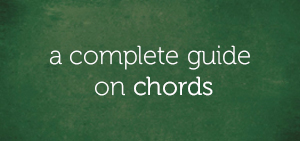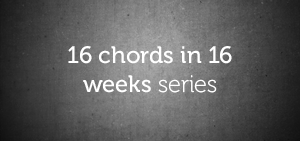Can I take you by the hand and show you a spicier harmonization of the major scale with diminished seventh chord?
If your answer is yes, then you’re on the right page.
Using the techniques you’re about to learn, you can also harmonize songs. I’m sure you know that once you’re able to harmonize the major scale, you can also harmonize songs and this is because 99.9% of regular songs are played with the tones of the major scale.
Before we jump into the harmonization of the major scale using diminished seventh chords, let’s quickly review the concept of stable and active tones in the major key.
Stable Tones Vs Active Tones
There are seven tones in every major (or minor) key and they are categorized into stable and active tones.
In the key of C major:
…the following tones — C, D, E, F, G, A, and B — can be categorized into stable and active tones.
Let me show you how this works.
An Overview Of Stable Tones And Active Tones In The Major Key
Apart from the first, third, and fifth tones of the major scale that are categorized as stable tones, the other tones of the major scale are said to be active.
“What Are Stable Tones…”
Stable tones are the tones that resonate with the major key and they are the tones of the 1-chord in the major key.
If you play the tones of the C major triad:
…in the key of C major:
…you’ll feel the completeness, stability, consonance associated with these tones.
“What Are Active Tones…”
The active tones in the major key are the tones that DO NOT resonate with the key. Talk about the second, fourth, sixth, and seventh tones of the major scale.
In the key of C major, the following tones are active:
D:
F:
A:
…and B
:
When these active tones are played, they have a sense of incompleteness.
For example, when D:
…is played over the C major triad:
…it tends to move towards E (which is a stable tone):
The Harmonization Of The Major Scale Using Diminished Chords
Before we completely harmonize the major scale, I’ll show you the harmonic reference used for stable tones and active tones.
Attention: The harmonic reference is the chord that is used in the harmonization of a melody note.
The Harmonization Of The Stable Tones
There are three stable tones in the major key and each of them is harmonized by the 1-chord.
In the key of C major:
…the stable tones (which are C, E, and G):
C:
E:
G:
…are harmonized using the 1-chord (the C major triad):
C:
…is harmonized by the C major triad (in first inversion):
E:
…is harmonized by the C major triad (in second inversion):
G:
…is harmonized by the C major triad (in root position):
So, keep in mind that once you can play the C major triad in the root position and other inversions (the first and second inversions), you can harmonize the stable tones in the key.
The Harmonization Of The Active Tones
There are four active tones in the major key. In the key of C major:
…they are as follows:
D:
…which is harmonized by the F diminished seventh chord:
F:
…which is harmonized by the G# diminished seventh chord:
A:
…which is harmonized by the C diminished seventh chord:
B:
…which is harmonized by the D diminished seventh chord:
Using these four diminished seventh chords, the major scale can be harmonized alongside with the major triad we covered earlier while harmonizing stable tones.
The Harmonization Of The Major Scale
Now, let’s put everything together.
Here’s how the major scale can be harmonized using the chords we’ve covered:
C:
D:
E:
F:
G:
A:
B:
C:
Final Words
I know you’re probably wondering what you should be playing on the left hand.
Well, if you go ahead and play the notes of the major scale on the left hand in such a way that the note you’re harmonizing is duplicated, you’ll have a reinforced sound.
For example, harmonizing C:
…with the C major triad (in first inversion):
…and playing C an octave below the melody note (on the left hand):
…produces a reinforced harmonization of with four notes:
…and you can assign a voice part to each of the notes:
Soprano (C):
Alto (G):
Tenor (E):
Bass (C):
We’ll talk more about this in subsequent lessons.
See you then!
Chuku Onyemachi
Latest posts by Chuku Onyemachi (see all)
- The Formation Of Diminished Seventh Chords Used To Be Challenging Until I Did This
- How To Form Seventh Chords In Two Shakes Of A Dog’s Tail Using Third Intervals And The Circle Of Fifths Chart
- I Played The 13sus4 Chord And This Happened…
- How To Build Seventh Chords Like An Architect Using “Foundation And Structure” Concept
- This 4-Week Plan Will Help You Master All The Major Scales







Comments on this entry are closed.